|
|
|
|
|
|

As always, if you have any comments about the newsletter or any of the information featured in this issue, we'd love to hear from you. Please
e-mail your feedback by clicking
here.
|
|
 |
|
|
|
|
Tips on How to Save Set-Up Time
and Get More Jobs Done In Less Time
One of the big production bottlenecks for many shops is the time it
takes to set up the machine for the job. While set-up is a necessary
action for any job, there are some things one can do to reduce the
amount of time it takes, and thus get more jobs done in less time, and
cut delivery times.
If your machine is not cutting parts right now, you are not making money
right now!
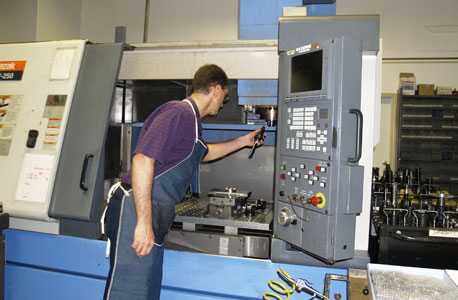
How much time is spent on set-up time in your shop? For example, I went
and looked at a shop to review this specific point, and we found they
were typically spending from 4 hours to 1.5 days to set up a job – and
with short-run jobs that then only took a few hours to run the parts,
you can see how much saving set-up time would multiply into significant
improvements in number of parts cut and thus more
profitability!
One of the big time-absorbing tasks is setting up the tools for the job.
In many cases, there are a certain set of tools that could be used on
many jobs you run. By using the same group of standard tools, you can
leave them in the machine from job to job and thus save the time of
setting up those tools. Sure, each job might also need tools that are
not in the standard group, but every tool you don’t have to set up
(because it is left set up from job to job) saves you time. How many
tools could you standardize on and thus save time in this manner?
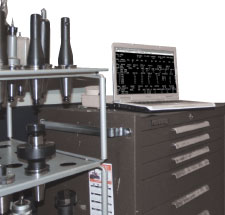 At first one might think this does not work because the ideal tool for
one job is rarely the same as the ideal tool for another job. However,
in many cases you could use a similar tool even if not perfectly ideal
-- the real question to calculate profitability is how much machining
time will you save by switching out tools versus the cost of setting up
the tools. In many cases, especially for short-runs, the savings by not
spending the set-up time far outweighs the number of seconds of
machine-time saved by using a slightly more optimum tool. At first one might think this does not work because the ideal tool for
one job is rarely the same as the ideal tool for another job. However,
in many cases you could use a similar tool even if not perfectly ideal
-- the real question to calculate profitability is how much machining
time will you save by switching out tools versus the cost of setting up
the tools. In many cases, especially for short-runs, the savings by not
spending the set-up time far outweighs the number of seconds of
machine-time saved by using a slightly more optimum tool.
Where do you start?
- Make a simple list of the tools you know could
be used on many jobs that come through your shop. For typical milling,
this could include for example a ¼- and ½-inch end-mill, a certain
spot-drill, certain taps and corresponding tap-drills, and maybe a few
drills that are used on a lot of parts.
- Now type that list up with an exact
specification – is it carbide or HSS? Is it 2-flute or 4? Is it stubby
length or long? etc.
- Now assign each of those standard tools a
standard name. On a Mazak mill, these would be called something like
“E-MILL .25A” – write that name on the list.
- Print that list out and give it to all the
programmers, set-up people and machinists working on these CNCs. See
if anyone has any further feedback, and get agreement that this is
going to be the standard list of tools that stay in each CNC all the
time.
- Post it by each programming station so it is
right at hand when making a program.
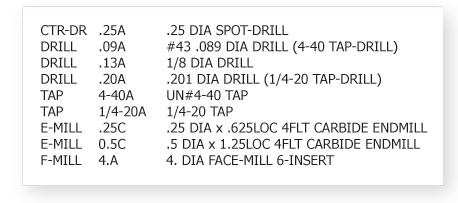
In the real world, often you will find the list is always expanding and no
one has the time to make the full complete list. But even just getting a
short list done will start saving time immediately. Don’t worry about
getting the list perfect, just get it started on the most common tools
used.
If you would like the computer to make your job even easier, here are a
few of the many ways that MazaCAM can help:
- MazaCAM has a function to print out the list
of tools used within a program. By using this function on a number
of your programs, you can start seeing what tools you use over and
over from job to job.
- Once you start standardizing tool-names, you
might find that old programs use other tool-names that should be
changed to your now standardized names. MazaCAM now makes this easy
with a function to replace a given tool-name to a different name
throughout the entire program with one command. (The feature can
even let you select from a Mazak’s Tool-Data, to make this even
easier.)
- MazaCAM offers a module that includes a way
for you to enter all your tools into a database, and thus help you
keep track of your tools, look them up and list them automatically
on tool-sheets/set-up sheets, etc.
Parting thought for the day:
In the real world, what determines value becomes the answer to the
ultimate questions:

-
“How much time and money will it
save me?” or
- “How much more time and money will
it make me?”, and
- “Does it work?”
Put ideas to test in the real world, not in the
world of competing ideas.
|
 |
|
|
|
|
|
Now more than ever it is
important to work as efficiently as possible. You owe it to
yourself to find out what is available to help get parts made
faster with less effort and time.
News
Mazak Selects a Distribu-tor for the Western Re-gion
Resources
Visit the forum that is all about
Mazatrol.
TheMazatrolAdvantage.com
Tech Tip
Back-up your Mazak control data
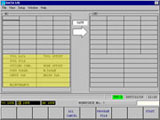
Usually everything is fine, but once in a while, the Mazak control (like any electronic equipment) might hiccup, get hit by static-electricity, a voltage surge, or whatever, and lose all its data
>> Read More
|
|
|
Training
Drawing
Basic-Milling
Lathe
Chains and Layers
3D-Milling
C-Axis Lathe
|
MazaCAM programs the Integrex, e-Machine,
Nexus, Multiplex, Quick Turn and Super Quick Turn and the broad range of horizontal and vertical machining centers as well as all standard G-code CNCs.
- Mazatrol Edit
- Convert Between Controls
- Communications
- File Management
Great news for
Mazak users!
Performance Package
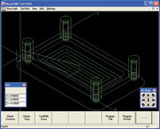
Show Tool Motion
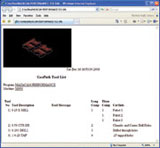
Customized Tool-Sheet
-
Estimate
Run-Time
-
Tool Management
-
and much
more...
|
Need more information?
Call us for details:
408.249.1529 main
888.322.3226 toll-free
|
|
|
| |
|
|
|
 |
|
|



 At first one might think this does not work because the ideal tool for
one job is rarely the same as the ideal tool for another job. However,
in many cases you could use a similar tool even if not perfectly ideal
-- the real question to calculate profitability is how much machining
time will you save by switching out tools versus the cost of setting up
the tools. In many cases, especially for short-runs, the savings by not
spending the set-up time far outweighs the number of seconds of
machine-time saved by using a slightly more optimum tool.
At first one might think this does not work because the ideal tool for
one job is rarely the same as the ideal tool for another job. However,
in many cases you could use a similar tool even if not perfectly ideal
-- the real question to calculate profitability is how much machining
time will you save by switching out tools versus the cost of setting up
the tools. In many cases, especially for short-runs, the savings by not
spending the set-up time far outweighs the number of seconds of
machine-time saved by using a slightly more optimum tool.



